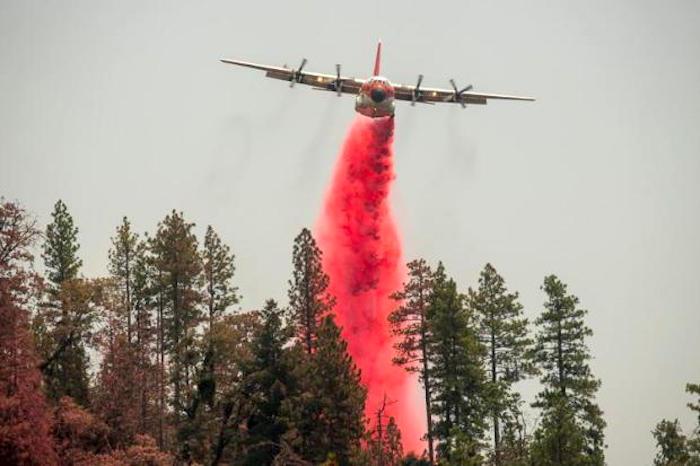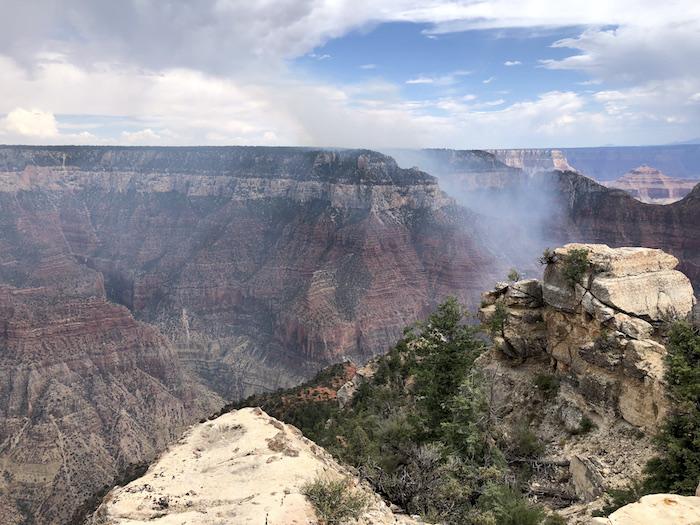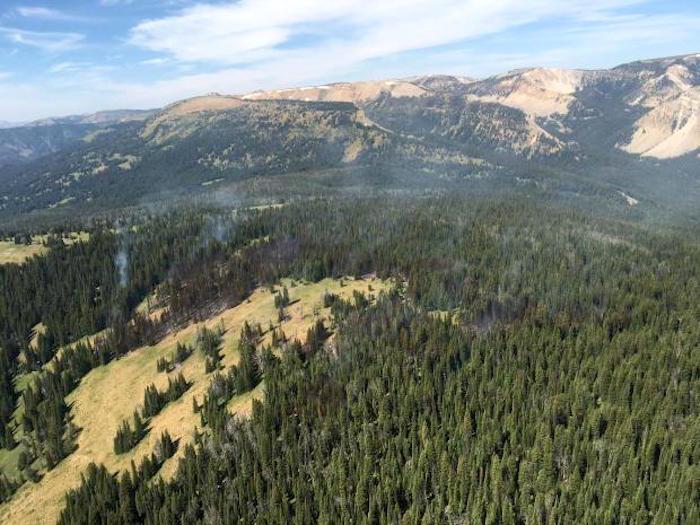
A C-130 air tanker drops chemical retardant on the Ferguson Fire in California/USFS 7-23-18
From Yellowstone to Grand Canyon, and Crater Lake to Sequoia, wildfires are burning in western areas of the National Park System. But the national park hardest hit by a wildfire is Yosemite, where the Yosemite Valley and Wawona areas were to close at noon Wednesday due to smoke and firefighters tied to a fire outside the park's western borders.
The wildfires, most ignited by lightning strikes, come at the height of the summer tourist season. For those planning trips to Yosemite, they were to be locked out Wednesday through Sunday, so firefighters tackling the Ferguson Fire wouldn't be impeded driving along State Route 41 that winds, rises, and falls along Yosemite's western border from just a bit inside the park's Arch Rock Entrance all the way south past Wawona to the South Entrance.
Lodgings, campgrounds, stores and other facilities inside the iconic valley and the Wawona historic district were to close, leading to roughly 1,000 canceled room reservations. As of Tuesday evening, the fire was estimated to cover 36,600 acres, with containment lines built around one-quarter of it.
Elsewhere in park system:
Crater Lake National Park, Oregon: The Timber Crater 6 Fire was burning in mixed conifer in the remote northeast corner of the park. It was one of several fires ignited by lightning in and around the park on Sunday, July 15. As of Monday night, it covered a bit more than 2,000 acres and was being fought by nearly 600 firefighters. Containment lines had been established around 15 percent of the fire.

Smoke from North Rim fires in Grand Canyon National Park/Rebecca Latson
Grand Canyon National Park, Arizona: Crews were working aggressively to contain several fires that lightning set on the North Rim of the park. The Saffron Fire, located between Fire Point and Swamp Point, was being directly suppressed. Fire crews were working to contain the fire at the smallest possible size by digging handline around the fire's perimeter, a park release said. The fire started in the southwest corner of the Kaibab National Forest late last week and had moved into the park. It was estimated Tuesday at 30 acres and backing and flanking in Ponderosa pine forest.
Fire crews were also directly suppressing the Atoko Fire, detected on July 22, on the east side of Cape Royal Road, near Atoko Point. Approximately 20 acres in size, the fire was creeping and smoldering within Ponderosa pine and brush fuels.
The Obi Fire was detected on July 21 and was located in the far southwest corner of the Wahalla Plateau above Obi Point. It was approximately 40 acres in size and burning in Ponderosa pine and brush. Fire managers plan to confine and contain the Obi Fire to a defined planning area while providing for point protection of identified sensitive natural and cultural resources.
Sequoia National Park, California: Helicopters ferried both ground crews and water dumps to the Horse Creek Fire burning in the park's John Krebs Wilderness Area.
"Firefighters continue to be challenged by steep terrain and high temperatures. However, a predicted stable air mass moving into the region will likely decrease the threat of thunderstorms," fire bosses reported Tuesday morning. "Fire behavior has remained moderate, with the fire creeping and smoldering along the ground."
The fire, covering just 30 acres and was sending some smoke into the Mineral King Valley, and there was a temporary hold on wilderness trips starting from Mineral King trailheads.
Whiskeytown National Recreation Area, California: The Carr Fire was reported Monday afternoon and within 24 hours it had grown past 3,100 acres. Tuesday afternoon it was estimated to have containment lines around 15 percent of the blaze. An evacuation order was in place for French Gulch and Whiskey Creek Road north of Highway 299 and State Route 299 west of Trinity Mountain Road to the base of Buckhorn Summit, and an evacuation center was opened at Weaverville Elementary School and at Shasta High School for residents east of Trinity Mountain Road. The fire was believed to have been started by a vehicle.
"Extremely hot and dry conditions, in addition to steep and challenging terrain will be some of the primary concerns today, as firefighters continue to work to increase and strengthen containment lines," fire bosses said Tuesday morning.
Nearly 900 firefighters, aided by 81 fire engines and four helicopters, were battling the fire.
Yellowstone National Park, Wyoming/Montana: The Bacon Rind Fire was set by a lightning strike in the Lee Metcalf Wilderness area of the Custer Gallatin National Forest about two miles west Highway 191, between Bacon Rind and Snowslide Creeks. By Monday afternoon part of the 200+-acre fire had moved into Yellowstone.
"The fire continues to move around in the thick heavy dead and down fuels, but has not made any sizable runs," the morning fire report said Tuesday. "Falling snags continue to be a significant safety concern for firefighters."

Bacon Rind Fire, Yellowstone National Park/USFS



Add comment